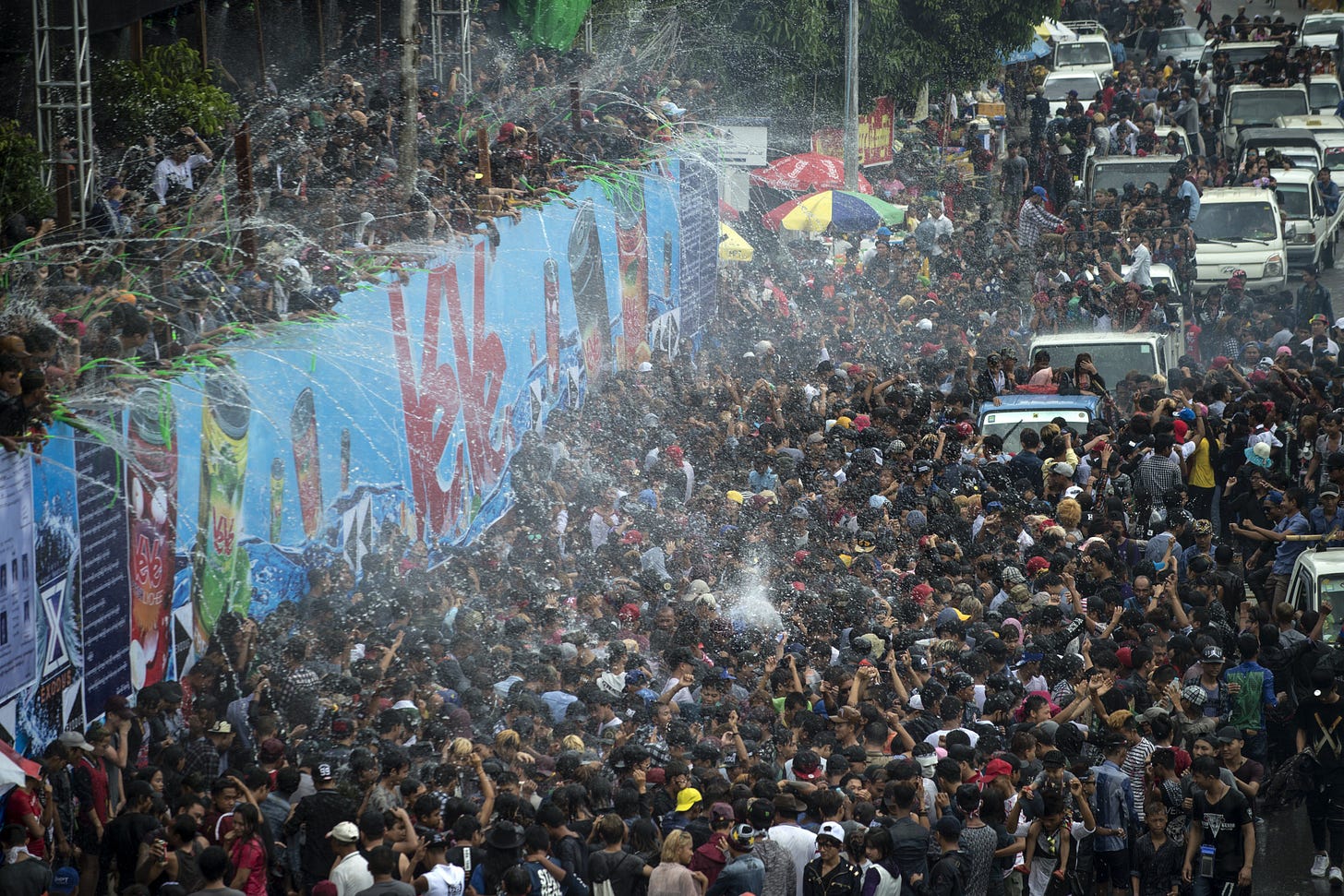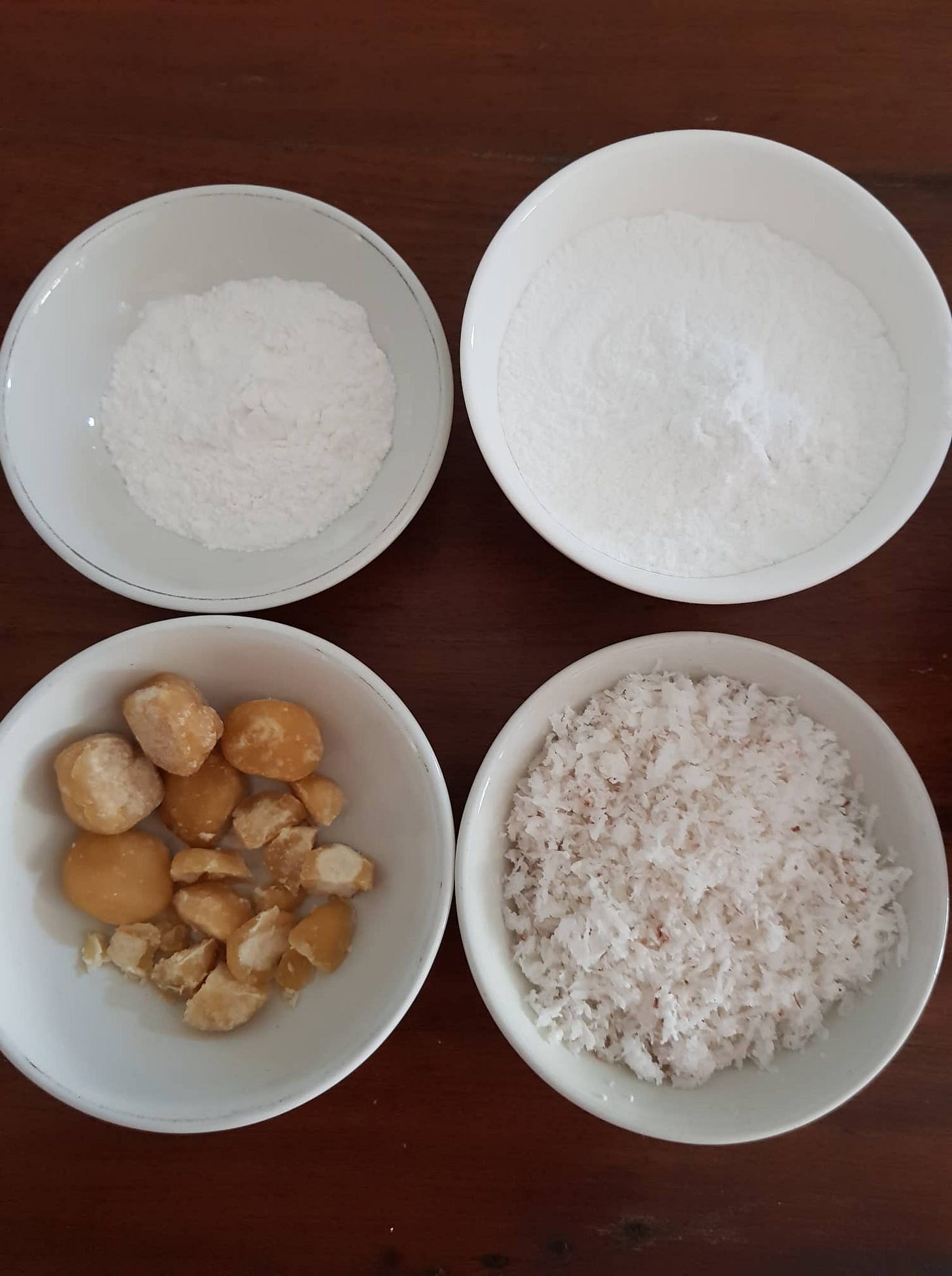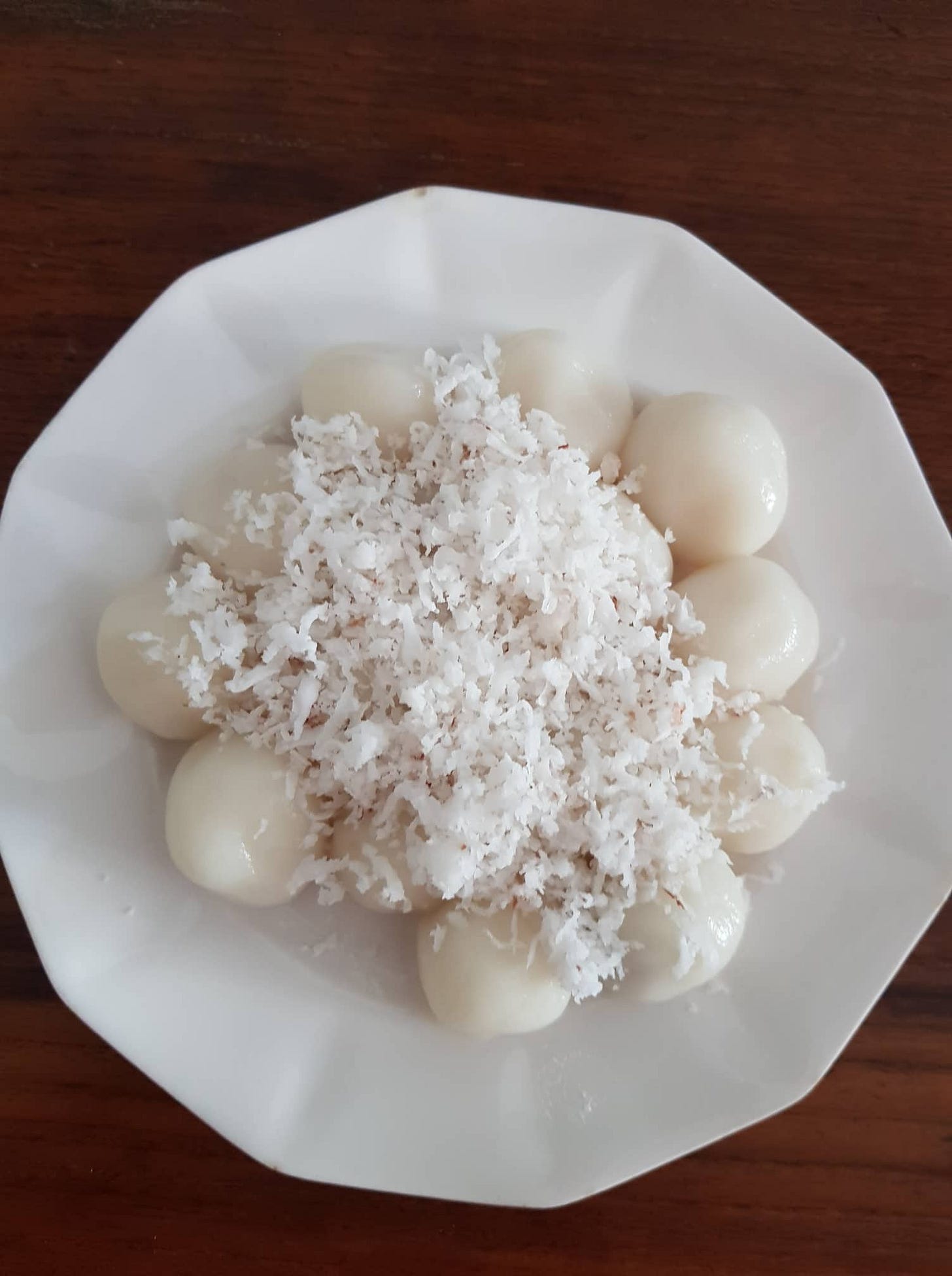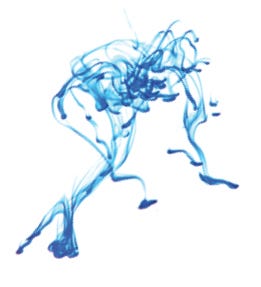Here’s To A Better 1384...
A newsletter about food systems, climate change and everything connected to them
No, I haven’t been looking at the wrong calendar. I’ve just been looking at a different calendar. Like most people in Burma/Myanmar, I grew up with two calendars, the Gregorian one and a traditional Burmese one, which goes by both the sun and the moon.
The latter started in 638 C.E. during the reign of King Popa Sawrahan, one of the kings of the Bagan Dynasty. If you want to know more, here’s an article about the intricacies of the Burmese calendar.
Under this calendar, a new year begins in April (Tagu in Burmese). So while friends in the West are celebrating Easter and Passover this weekend, those at home will be ushering in the year 1384 on Apr 17 (Sunday), and I decided to write about Thingyan, the traditional Myanmar New Year festival and the foods associated with the celebration.
I realise this is a bit of a departure from my normal issues, but I wanted to focus on something warm, fun and associated with good memories, rather than the depressing state of the world’s food systems or how bad the current situation is in Myanmar.
If you want a bit of background on Myanmar and its food, you can read the issue I wrote in the immediate aftermath of the terrible coup last year and one on the foods I grew up with. Click on the boxes below.
Or if you want to follow the latest news, Myanmar Now (full disclosure - I set this up in 2015 but haven’t been managing it since early 2016) and Frontier are two of the best local outlets staffed with courageous reporters. For this week’s Thin Ink though, let’s stick to something lighter.
What’s Thingyan (သင်္ကြန်)?
It is the biggest festival in Myanmar and that’s saying something, because we like festivals. Almost every month, there is some festival or the other and it is usually linked to Buddhism. Some are more popular than others - the Thadingyut Light festival in October is a bigger deal than the one in Nayone/June when there is a nationwide exam for Buddhist monks.
But Thingyan is truly special. It is a multi-day water throwing ceremony held in the middle of the hottest month of the year. It’s similar to Thailand’s Songkran and Laos’ Pi Mai. It’s the one time when young people in Myanmar are allowed to let loose and have fun. This includes being able to tease the elders, which is always frowned upon in this conservative society.
The whole idea behind pouring water over each other is to wash away the bad things from the previous year and usher in a new year clean and refreshed.
Unless it’s a leap year, Thingyan usually starts on Apr 14 and lasts three days. Apr 13 is the “preliminary (အကြို)” day which is usually reserved for putting the finishing touches to your “pandals” - temporary street-side stages built with bamboo or wood just for the occasion - and depending on how grand your pandals are, to test the water pressure of your pipes.
Every year when I was growing up, we had a scrappy little pandal on the street outside our house in Yangon, with bamboo poles lashed together and coconut fronds for the roof.
It was mainly for the kids. Me, my sister, as well as some friends and neighbours. We hung out there all day trying to soak anyone who dared come close. The rich Yangon kids in their stripped-down jeeps, or people going past on bicycles. Everyone was fair game.
How does it work?
There are two broad groups of revelers during Thingyan - those who throw water from the pandals and those who go around different pandals to get water thrown on them.
The former, which is what I used to do, often stay in the same pandal all three (or four) days. Sometimes it’s as basic as using plastic cups and buckets to throw water stored in big plastic barrels. Or you can actually have a system where water from a well is connected to high-pressure pipes.
My favourite method is using no-si-khwet - condensed milk can! You fill it half way, then hold it in the right position and with a flick of a wrist you throw this slosh of water that lands like a big, hard slap. It requires dedicated practice.
My family started with the basics and upgraded to the pipes in my late teens. Regardless of the equipment, we would start the water throwing from around nine in the morning till around noon or lunch time. We will then have a break to eat and take a nap before coming back out again and splash water until about six.
The people getting soaked in the street are usually made up of groups of friends or families who usually hire jeeps or trucks - hardy vehicles that can take hours of being soaked in water - and travel from pandal to pandal. The really sneaky ones will come armed with their own water tank on the car and engage in a water fight with those on the pandals.
How fun was it?
A lot of fun. There is usually music, dancing, free snacks and much laughter. Like I said above, Thingyan was a rare opportunity to indulge an authorised ration of naughtiness in a strict, hierarchical society.
Young men would tease the parents of pretty girls by shouting “father-in-law!” and “mother-in-law!” at them suggestively from passing cars. Teasing like that would normally earn a bollocking from the elders, but it is generally tolerated during Thingyan.
And at home, if we behaved well during the first two days, our parents and grandparents would reward us by buying blocks and blocks of ice that were dumped into the water tank so any water coming out of the pipes was ice cold.
Thingyan was also a time of real pleasure for people in Myanmar during the years when we tragically had few reasons to be cheerful. There are barely any celebrations this year though as people boycotted the military-sponsored celebrations.
What’s the food that’s synonymous with Thingyan?
Mont lone yay baw (မုန့်လုံးရေပေါ် or literally translated as round dough floating on water). It is made with glutinous rice, palm sugar (or jaggery) and coconut shavings. Our version at home, prepared by a cousin who has never made a bad dish I have tasted, uses both the rice flour and glutinous rice flour in a one to three ratio.
The flour is rolled into balls with a small hole inside, which is filled with small pieces of palm sugar or jaggery. They are then boiled in water. When the balls are cooked, they will float up to the surface (hence the name). They are served with a generous topping of coconut shavings.
It’s a simple but delicious snack that is often served for free to neighbours and visitors during Thingyan, but it is also quite common for mischievous cooks to stuff hot chili inside some of these balls and see which unsuspecting diner ends up with it.
I also remember eating tall glasses of cool faluda every afternoon during the break. It is an Indian dessert but the Burmese version has custard and doesn’t use nuts, dry fruits or sabja seeds.
My mum would bring out her ice shaving kit and then pile the shaved ice halfway into the glass. She will them assemble the brightly coloured jellies, the custard, and the ice cream on top of each other before pouring some milk and a drop of rose syrup.
To this day, eating faluda reminds me of those afternoons at our house in Yangon, with the ceiling fan whirring above and a dozen or so of us - friends, siblings, relatives - enjoying this deliciously sweet concoction before heading back out to throw more water.
Want to know more about Myanmar food?
1. Check out some recipes and life stories in the Food & Drink section of The Kite Tales.
2. For delicious food with a dose of politics, follow cookbook author MiMi Aye’s instagram.
3. There’s also Masterchef contestant Suu Khin’s instagram for elevated Burmese cuisine.
4. Another Burmese chef, Lady Goo Goo, has been holding pop-ups in different parts of Europe.
Have a great Easter/Passover/Thingyan weekend! Please feel free to share this post and send tips and thoughts on twitter @thinink, to my LinkedIn page or via e-mail thin@thin-ink.net.









